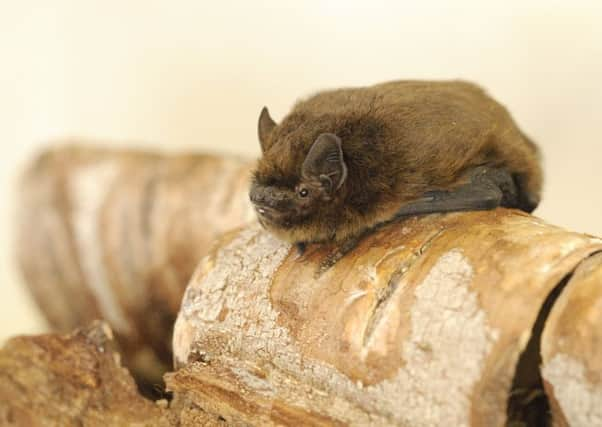Wildlife worker Jennifer Simpson: '˜We can all help the creatures in our gardens'


The aim is to encourage everyone to support wildlife in their gardens.
This year’s focus is on bats and how we can use our gardens to support them and other wildlife.
Advertisement
Hide AdAdvertisement
Hide AdBats need insects, so gardeners are being urged to consider this nocturnal mammal when making planting choices to sustain future populations.
Bats are the only mammals capable of powered flight, achieved with wings formed from skin stretched across specialised elongated hand bones.
They feed on insects at night. They don’t compete with birds but are exposed to different challenges.
Because of their small eyes, bats have developed echolocation to find their way in the darkness.
Advertisement
Hide AdAdvertisement
Hide AdAs they fly, they emit high-pitched calls and use the echoing sound waves to navigate and locate their prey.
Bats roost in cool, dark places such as trees, caves and houses and hibernate over the winterbecause of the lack of food.
Eight species of bats can be seen in Hampshire and the Isle of Wight:
* Bechstein’s –a medium-sized bat which roosts in tree holes and feeds in woodlands.
Advertisement
Hide AdAdvertisement
Hide AdIt was thought to be extremely rare but has been recorded at our Ningwood Common nature reserve and in the New Forest.
*Brown long-eared – characterised by its long ears, this species has been recorded at our Roydon Woods nature reserve.
*Grey long-eared – much rarer than it’s brown cousin, it feeds by gathering prey from trees.
*Serotine – a large bat found in roof spaces of older buildings which is restricted to southern Britain and south Wales.
Advertisement
Hide AdAdvertisement
Hide Ad*Noctule – this bat can be seen suddenly swooping in flight catching insects. It has been recorded at a number of our reserves including Ancells Farm.
*Greater Horseshoe – one of Britain’s largest bat species which has seen a decline by 90 per cent in the past 100 years due to roost disturbance and loss of pasture land.
*Barbastelle – one of the rarest bats, this one displays black, glossy fur and feeds near water. This species has been recorded at the Trust’s St Lawrence Undercliff Woods.
*Pipistrelle – two very similar species, common and soprano, which can be distinguished by the frequency of their calls. These very small bats are the most commonly recorded species and are regularly recorded as part of the on-going monitoring for the Itchen Navigation Project.
For more information go to hiwwt.org.uk.
* Jennifer Simpson works for the Hampshire and Isle of Wight Wildlife Trust